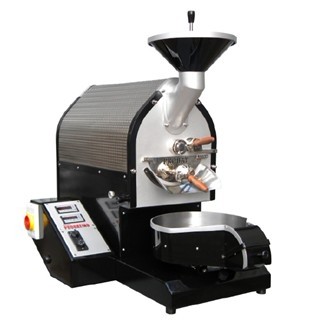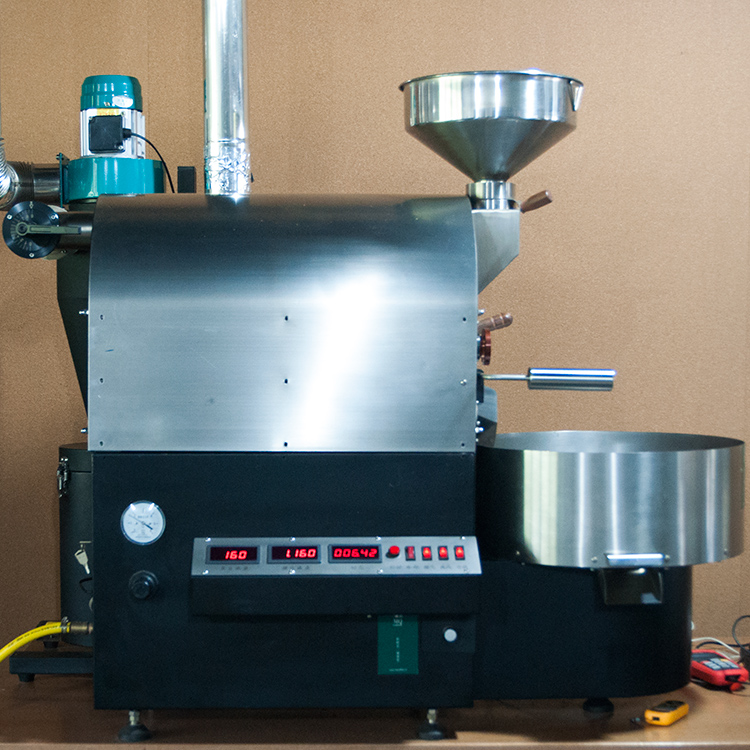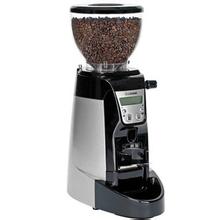Coffee roaster: PROBAT Germany's top coffee roaster Tino 800g-1200g

Introduction to probat Brand
In 1864, as a result of the construction of the railway, Alexius van G ü lpen, a pioneer of raw coffee beans in Emmerich, Germany, had a whim to promote freshly roasted coffee beans to retailers in other regions. However, the first problem to be solved is the need for a high-output bean dryer.
So I got to know Theodor von Gimborn, a local engineer at Emmerich. After four years of research and development, he finally developed the first large bean dryer with high output in 1868, and also set up Emmericher Maschinenfabrik & Eisengie é erei van G ü lpen, Lensing & von Gimborn, the predecessor of PROBAT. Until 1880, the company continued to grow with an astonishing sales volume of more than 600 bean dryers a year; in 1900, the sales of bean dryers exceeded 50000; the 100,000th was proudly sold in 1938, and the company officially changed its name to PROBAT- Werke. In the vast number of sales, 80% of the sales come from exports and are sold in more than 60 countries around the world.
Product characteristics
PROBAT's bean baking equipment, including the Probatino with the capacity of 1.2kg, and the rollers used by the 5kg and 12kg Probatone PROBAT are designed to rotate back and forth from side to side, coupled with a unique leaf design, so that the coffee beans are always in a state of stir-frying and ensure that the beans are heated evenly.
30% of the heat comes from direct conduction and radiation, while 70% is heated by hot air. In addition, the outside of the drum is covered with a layer of thermal insulation cotton, so that the internal temperature of the bean dryer is not easy to lose, and the heat storage effect is excellent. For this reason, PROBAT can make it easier for operators to achieve similar quality in every baking. In addition to baking equipment, PROBAT offers a variety of options, including laboratory testing equipment, coffee raw bean grading equipment and soot treatment and combustion equipment. Major international coffee bean merchants, such as LAVAZZA and UCC, use PROBAT equipment to bake coffee beans, and the quality is well-known.
PROBAT also produces cocoa, malt and nut processing equipment. Since its establishment in 1868, it has been committed to the development and production of a complete set of coffee processing and baking equipment, with distributors in Italy, the United States and Brazil, and 80% of its products are exported to Europe, North America and Central and South America. The Probat coffee roaster is sturdy and durable, unique in design, minimizes human interference in the working process of the equipment, has a simple operation interface, is easy to use, and is not prone to some common "baking defects" in coffee roasting.
In fact, PROBAT produces all kinds of equipment involved in the entire coffee industry chain. Roasters alone are divided into several categories:
1. PROBAT SATURN centrifugal roaster series, the baking capacity in a single furnace ranges from 32kg to 640kg
2. PROBAT JUPITER tangent roaster series, with a baking capacity of 50,750kg per furnace.
3. PROBAT NEPTUNE drum roaster series, with a baking capacity of 80,640kg per furnace.
4. PROBAT COLOMBO NOVA series roaster with a baking capacity of 120,500kg in a single furnace
5. PROBAT BASIC basic roaster series, with a baking capacity of 150kg to 450kg per furnace.
6. Boutique coffee roaster series, with a baking capacity of 1kg to 50kg in a single furnace.
The roasting level above 5kg can be connected to a computer program to record the baking curve, or the coffee can be roasted automatically by the computer.
Important Notice :
前街咖啡 FrontStreet Coffee has moved to new addredd:
FrontStreet Coffee Address: 315,Donghua East Road,GuangZhou
Tel:020 38364473
- Prev

Coffee roaster introduction: HB coffee roaster 2KG semi-automatic
Specification of Hb-L2 roaster 1. Mainframe appearance size (L x W x H / mm): 1170x500x1000 2. Silver skin collection system (L x W x H / mm): 320x320x1130 3. Outer package dimensions (length x width x height / mm): 1240x900x980 4. Gross weight (including packing wooden cases): 165kg main engine net weight: 120kg 5. Single maximum roasting capacity: the best roasting of raw beans in 2kg coffee
- Next

Coffee grinder: the difference and selection between Robur and its cone knife Royal and its flat knife
There are many kinds of grinders on the market. From manual to electronically controlled tapered blades. But for espresso, the grinder is the most demanding. That's why. First talk about two basic concepts, insufficient extraction, that is, the flow of water through the coffee powder is too fast, or the temperature is too low to fully extract the flavor of coffee. Excessive extraction, on the contrary, coffee water is trapped in coffee powder.
Related
- What is the Philharmonic pressure? How to use Philharmonic pressure to make delicious coffee
- Why does a hand grinder have more fine powder than an electric grinder?
- In addition to the hot mom, what is the difference between the versions of EK43 | ditting and Mahdi ek43?
- What kind of equipment do you need to make coffee by hand? Introduction to novice starter cooking equipment tools
- Espresso needs to be ground how thick and thin scale entry Italian Coffee Machine Bean Grinder investigation and Grinding course
- How much does it cost to open a small private cafe? How much does it cost to learn coffee? How to operate it?
- The difference between the flavor characteristics of hand-brewed coffee and coffee maker is hand-brewed coffee really better than coffee maker? Can I use a coffee machine to make coffee beans by hand?
- The difference between 01 and 02 of hario v60 filter cup what is the difference between 01 and 02 filter cup opening and cooking flavor
- What's the difference between the smart cup and the French kettle? Which is better, the French kettle or the Smart Cup?
- What's the difference between a smart cup and a V60 filter cup? The difference between the taste of smart cup and hand-brewed coffee

